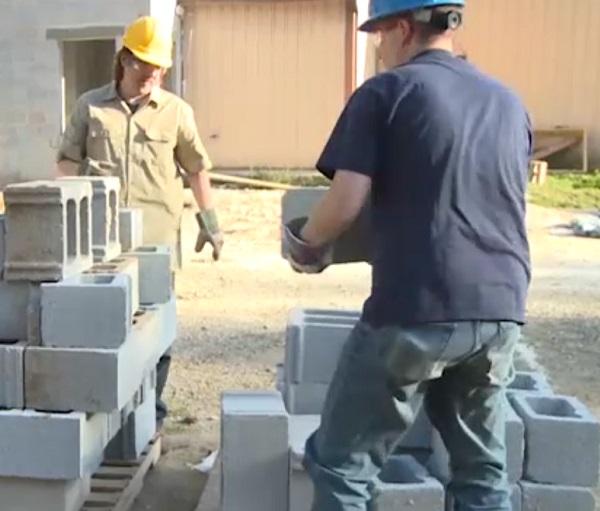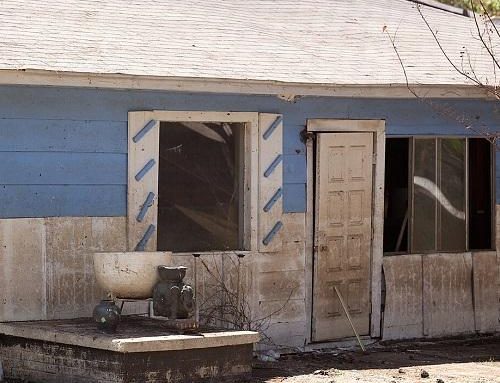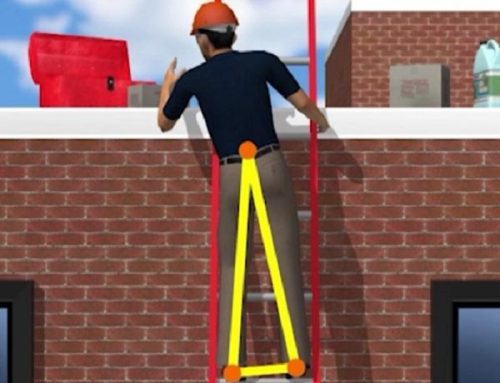Silica dust is a silent killer. This common mineral found in sand, rock, concrete, brick and other construction materials can cause serious lung diseases and cancer when inhaled over time. That’s why OSHA implemented strict new Silica Standards for General Industry and Construction to limit worker exposure.
This comprehensive training guide summarizes an online training course on silica hazards and safety precautions. It provides vital information all workers need to know to protect themselves from this invisible threat. Continue reading to learn about the health risks, exposure limits, employer responsibilities, exposure control plans, engineering controls, safe work practices, PPE and more. With this knowledge, you’ll be equipped to avoid silica and go home safe at the end of each workday.
The Hazards of Crystalline Silica
Crystalline silica is a natural mineral commonly found in the earth’s crust. It’s a basic component of soil, sand, granite and other natural materials. The most abundant forms are quartz, cristobalite and tridymite.
Silica is useful for manufacturing glass, concrete, brick, cinderblock, ceramic glazes and abrasives. It’s even used as an additive in some foods and drugs. In these finished forms, silica is harmless. But when these materials are cut, ground, drilled, or chipped, it breaks down into a fine dust containing microscopic particles called respirable crystalline silica.
When inhaled deep into the lungs over time, these tiny particles cause scarring and inflammation of lung tissue leading to several diseases:
- Silicosis – This incurable condition causes shortness of breath, fatigue, chest pains, and weight loss. It can be fatal. Workers may not even be aware they have it until major damage has occurred.
- Lung Cancer – Silica is a known human carcinogen. It can lead to lung cancer even without silicosis.
- COPD – Chronic obstructive pulmonary disease causing long-term breathing problems.
- Tuberculosis – Silica exposure increases susceptibility to TB infections.
- Kidney Disease – Can cause kidney damage and even failure.
OSHA estimates over 100,000 U.S. workers in general industry and 2 million construction workers are exposed to silica dust on the job each year. Some occupations at high risk include:
- Abrasive blasting
- Foundry work
- Stone cutting
- Rock drilling
- Tunneling
- Concrete work
- Brick and block laying
- Asphalt work
- Ceramics manufacturing
- Jewelry work
To protect workers from these serious hazards, OSHA created new Crystalline Silica Standards for General Industry and Construction. These limit allowable exposure levels and require specific methods to reduce and control silica dust.
OSHA Silica Dust Exposure Limits
The new OSHA silica standards set much lower exposure limits than previous regulations. This significantly reduces the risk of silica-related illnesses. Here are the key exposure benchmarks:
- Permissible Exposure Limit (PEL) – This is the maximum amount of respirable crystalline silica workers may be exposed to over an 8-hour shift. The new PEL is 50 micrograms per cubic meter of air (50 μg/m3).
- Action Level – This is 25 μg/m3, half of the PEL. At and above this level, employers must take steps to reduce exposures.
Previously, general industry had PELs up to 100 μg/m3 and construction up to 250 μg/m3. OSHA estimates the new 50 μg/m3 limit will save over 600 lives and prevent 900 new cases of silicosis per year.
Employer Responsibilities
To comply with the Silica Standards, employers must:
- Assess worker exposure levels for each task performed.
- Implement controls to maintain exposures at or below the PEL.
- Limit access to high exposure areas.
- Establish training programs for silica hazards.
- Provide safety equipment.
- Conduct medical surveillance for exposed workers.
- Maintain records of silica testing and medical exams.
Failure to meet these obligations can result in OSHA fines and penalties. Let’s look at some of the key requirements in more detail.
Exposure Assessments
Before starting work on any process or task that could expose workers to silica, employers must test the amount of respirable silica dust generated. They must do additional assessments whenever a change in production could affect exposure levels.
If silica levels will remain below the action level, no further steps are required. But if the action level is reached or exceeded for at least one employee, the employer must measure exposures for each task individually. Workers will be notified of results for any tasks putting them above the action level.
Exposure Control Plans
A written exposure control plan provides a blueprint for limiting silica exposures in the workplace. It must list all tasks that could expose workers to silica, identify engineering controls, detail safe work practices, and specify what PPE is required.
Other elements include housekeeping methods, employee training programs, exposure monitoring procedures and medical surveillance requirements. Employers must review and update plans at least annually to reflect any changes in processes or procedures.
Regulated Areas
Any area where exposures exceed the PEL even after implementing feasible controls is considered a “regulated area.” Access must be restricted to necessary personnel. All who enter must wear respirators and any other PPE specified in the exposure control plan for that operation.
Competent Person
For construction industry employers, the silica standard requires designating a “competent person” to oversee compliance at job sites. This individual must have specialized training and be knowledgeable of the rule requirements and the company’s exposure control plan.
Medical Surveillance
Employers must make medical exams available every 3 years for workers exposed above the action level for 30 or more days a year. Testing includes lung function tests and chest x-rays to check for signs of silicosis or other related illnesses.
Recordkeeping
Extensive records must be kept of silica exposure assessments, medical surveillance results, training sessions and other rule compliance activities. These must be made available to employees, OSHA and other parties.
Controlling Silica Exposures
There are several ways companies can reduce concentrations of respirable crystalline silica in work areas:
Engineering Controls
These involve making physical or mechanical changes to isolate workers from silica dust or remove it from the air:
- Enclosed ventilation systems to capture and filter out dust
- Vacuum dust collection systems on tools
- Water sprays to suppress airborne dust
- Isolation booths for dusty operations
- Automatic feeders on saws to minimize cutting time
Administrative Controls
These include adjusted work policies and schedules:
- Limiting time workers spend near silica dust
- Job rotation to reduce individual exposures
- Training on hazards and exposure prevention
- Respirator fit testing and training
Safe Work Practices
Proper procedures for dusty jobs can minimize silica releases:
- Wetting down materials before cutting, grinding, sweeping
- No compressed air or dry brushing to clean surfaces
- Containing dust-generating processes with shrouds or enclosures
- Using handheld tools equipped with dust collection systems
- Washing hands and face before eating, drinking or smoking
Personal Protective Equipment (PPE)
Approved respirators, protective clothing, goggles and other PPE provides additional protection from airborne silica dust:
- Respirators with N95 filters or better
- Tyvek suits or other disposable coveralls
- Gloves, hats and eye protection
For any respiratory protection, employers must provide medical evaluations, training and fit testing.
The Hierarchy of Controls
Ideally, engineering controls that enclose or isolate the hazard should be implemented first. If exposures still exceed the PEL, administrative controls should be employed to limit time in contaminated areas. PPE should be relied on only after other options have been exhausted.
Proper Maintenance Makes Controls Effective
Any equipment used to reduce silica dust requires periodic inspection and maintenance to ensure it’s working properly. This includes:
- Checking tool dust collection systems.
- Changing industrial ventilation filters.
- Maintaining water spray devices.
- Inspecting and fit testing respirators.
Staying Safe on the Job
While your employer should provide adequate training and protection from silica according to OSHA rules, you also need to do your part. Here are some best practices that will help keep you healthy:
- Attend all workplace trainings on silica dust.
- Know the exposure control plan requirements for your facility and job.
- Follow established work procedures to control dust.
- Use and maintain your PPE properly.
- Report any damaged or missing dust controls.
- Don’t remove respirators or protective gear until safely away from contaminated areas.
- Shower if dusty and change clothes before leaving work to avoid bringing silica home.
- Participate in medical surveillance programs.
- Speak up about unsafe conditions or PPE problems.
- Stay informed on new protective methods and equipment.
Your life depends on it!
Conclusion
Respirable crystalline silica poses a deadly threat to millions of workers each day across many different industries. But with proper training, planning and equipment this hazard can be controlled. Companies must follow OSHA’s strict new exposure limit regulations and workers should utilize all provided safety measures.
By understanding the risks, following outlined precautions and being proactive about your health, you can avoid chronic silicosis and other related diseases. Use this comprehensive training guide as a go-to reference for protecting yourself on the job. And be sure to speak up if you ever feel unsafe. Stay smart, stay safe and keep breathing!
Building on the vital information provided in this training guide, our “Silica Safety in Industrial and Construction Environments” online course offers an in-depth educational experience. This specialized program aligns with OSHA’s Silica Safety Rule, providing essential training to ensure your workforce not only understands the hazards of silica dust but also knows how to manage and mitigate these risks effectively in the workplace.
Elevate your team’s safety knowledge with Our “Silica Safety in Industrial and Construction Environments” online course. This specialized training program is essential for anyone exposed to silica dust, a common yet hazardous material in many industrial and construction settings.
Addressing the Silent Threat of Silica Dust
With over two million workers exposed to silica dust annually, the potential for serious health issues, including fatal diseases, is a significant concern. Our course is designed to educate and empower your workforce, aligning with OSHA’s Silica Safety Rule, to ensure a safer and more compliant work environment.
A Comprehensive Silica Safety Curriculum
Our training program covers a wide range of crucial topics:
- Understanding the hazards of respirable crystalline silica.
- Detailed review of OSHA’s Silica Safety Standards.
- Recognizing and managing exposure to silica dust in the workplace.
- Implementing and following a silica dust exposure control plan.
- Utilizing control systems, safe work practices, and appropriate personal protective equipment (PPE).
- The importance of medical surveillance and recordkeeping in silica safety.
Micro-Learning for Effective Learning
We understand the challenges of integrating comprehensive training into busy work schedules. Our Micro-Learning approach, with concise 3-5 minute courses, ensures that your team can absorb critical information efficiently, without disrupting their work.
Training for a Diverse Workforce
Our commitment to inclusivity in safety training means offering all course materials in both English and Spanish. This approach ensures that every member of your diverse team has equal access to this vital training.
Beyond Digital Training
To cater to various learning styles and reinforce the training, Our also provides additional resources like DVDs, interactive CD courses, kits, booklets, and posters, complementing our digital offerings for a rounded learning experience.
Your Partner in Workplace Safety
Opting for Our “Silica Safety in Industrial and Construction Environments” course means choosing a safer, more informed workplace. We are dedicated to helping you meet OSHA standards and protect your employees from the hidden dangers of silica dust.
For a detailed course outline and to experience a demo of Our Online Training System, click below. Let’s work together to ensure your workplace is not just compliant but also a safe environment for everyone.










